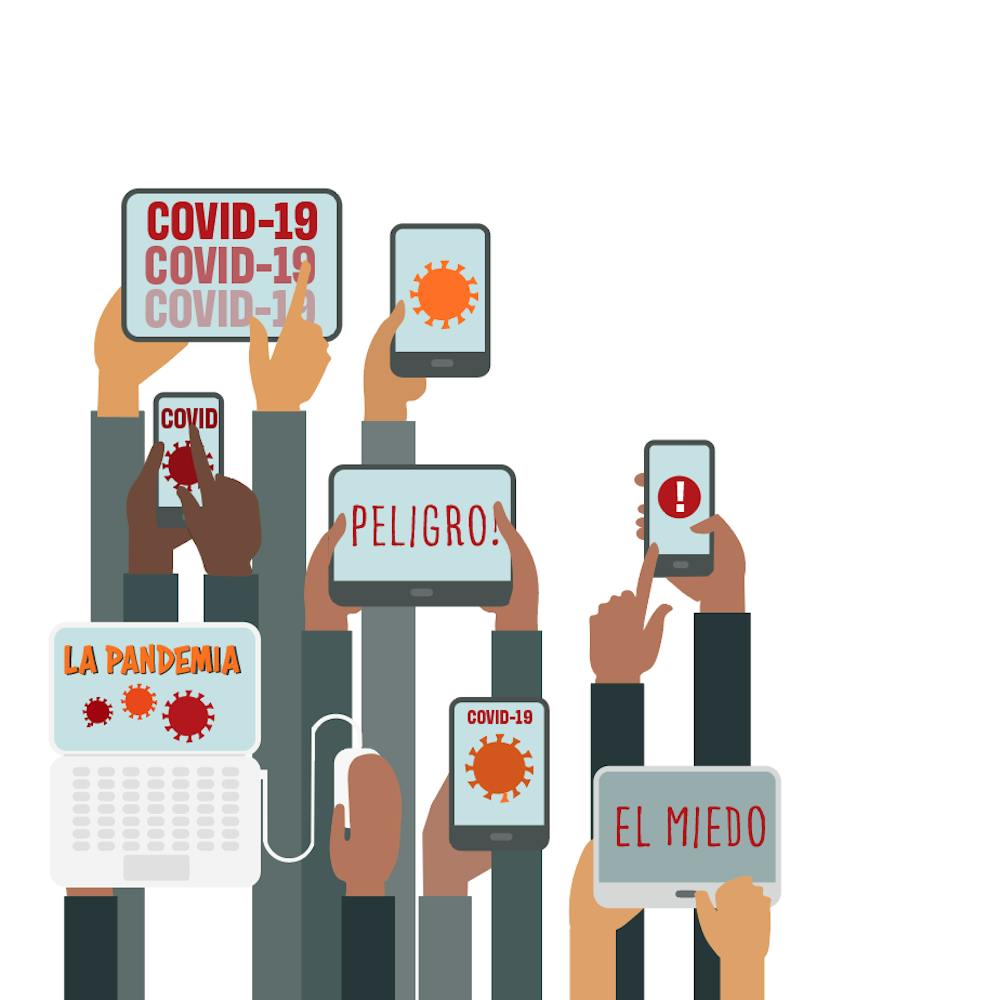A study found that social media platforms used heavily for communication within Spanish-speaking communities such as WhatsApp and Facebook have created misinformation by providing less reliable information available in Spanish. The study also found that the spread of misinformation in Spanish correlates with lower vaccination rates in Latinx communities — with the exception of Charlottesville.
The non-profit Avaaz researched the number of Facebook posts containing misinformation that had a warning flag to alert viewers that the content was false. The study found that in Spanish, 70 percent of Facebook posts containing misinformation do not have a warning flag. In English, meanwhile, only 29 percent of posts are unlabeled.
This gap can make factual information on health topics harder to find in Spanish than in English — a research study published by the National Center for Biotechnical Information found that only 22 percent of websites in Spanish accurately and thoroughly covered elements of various diseases compared to 45 percent of websites in English.
Assoc. Radiology Prof. Dr. Juliana Bueno thinks this problem goes beyond the language barrier and is due in part to a cultural barrier with medical professionals.
“I think the Hispanic community has a big family unit-centered practice,” Bueno said. “They rely more on what others tell them, what their families do as a unit and what the community does. We don't have an optimal representation of physicians that can speak the language or that can relate to their cultural experiences, so that all contributes to distrust or mistrust in the medical sources that they find.”
Nelson Santana, assistant professor and collection development librarian at Bronx Community College, attributed this mistrust to the history of discrimination in healthcare against Latinx people. Santana has taught courses in cultural studies, focusing specifically on Latin America, as well as in fake news. Santana mentioned specifically the sterilization campaign by the U.S. and Puerto Rican government between the 1930s and 1970s, when nearly one-third of Puerto Rico’s female population was forcibly sterilized.
“You have people that have experienced this personally [and] you have people who are the children of people who have experienced this personally,” Santana said. “Part of when they receive certain information, which is misinformation, is that they're also putting it on. They're thinking of these other tragic events that have happened within their own communities, so this then becomes compounded and it makes it even more difficult for people to trust the government.”
The effects of misinformation caused by social media companies have been amplified thanks to the COVID-19 pandemic, playing a major role in many people’s decision to get vaccinated. According to the Centers for Disease Control, just 17.1 percent of Hispanic or Latinx people in the United States have been administered one or more vaccine doses. This compares to the national average of 62.7 percent.
Bueno said that many myths circulating about the negative effect of COVID-19 vaccines on health play a role in the gap in vaccination rates within the Latinx community.
“I think that misinformation about the secondary effects and the issues around the vaccine have contributed,” Bueno said. “It goes back to the disparity in health care of underrepresented minorities. I think that if that disparity has been enhanced by the pandemic and by the availability of resources, then it just perpetuates the disparity, and that's what we're seeing right now.”
In Charlottesville, however, this disparity is much smaller. As of June, 60 percent of Latinx people in Albemarle County had been administered one or more vaccine doses. Around this time, around 70 percent of all people in Albemarle County had received one dose.
The high vaccination rate of Latinx people was supported in part by the work of the U.Va. Latino Health Initiative, which serves the 5.8 percent of Albemarle County that is Hispanic or Latinx. Nationally, 18.5 percent of the U.S. population is Hispanic or Latinx.
Fourth-year Medicine student Daniel Rounds said the Latino Health Initiative worked on distributing information on the vaccine to the Latinx community through its Facebook page. Rounds is a student leader at La Clinica Latina, the Latino Health Initiative’s partnership with the Charlottesville Free Clinic.
“When the vaccine became available, we really focused on bringing it to the neighborhoods themselves and having efficient volunteers that spoke Spanish, so that it was really culturally competent.” Rounds said. “Having that positive experience and having the outreach of U.Va. actually going to the community where it's accessible kind of created a ripple effect.”
This ripple effect is one explanation for the vaccination rate of Latinx people in Charlottesville being one of the highest among ethnic groups in Virginia.







